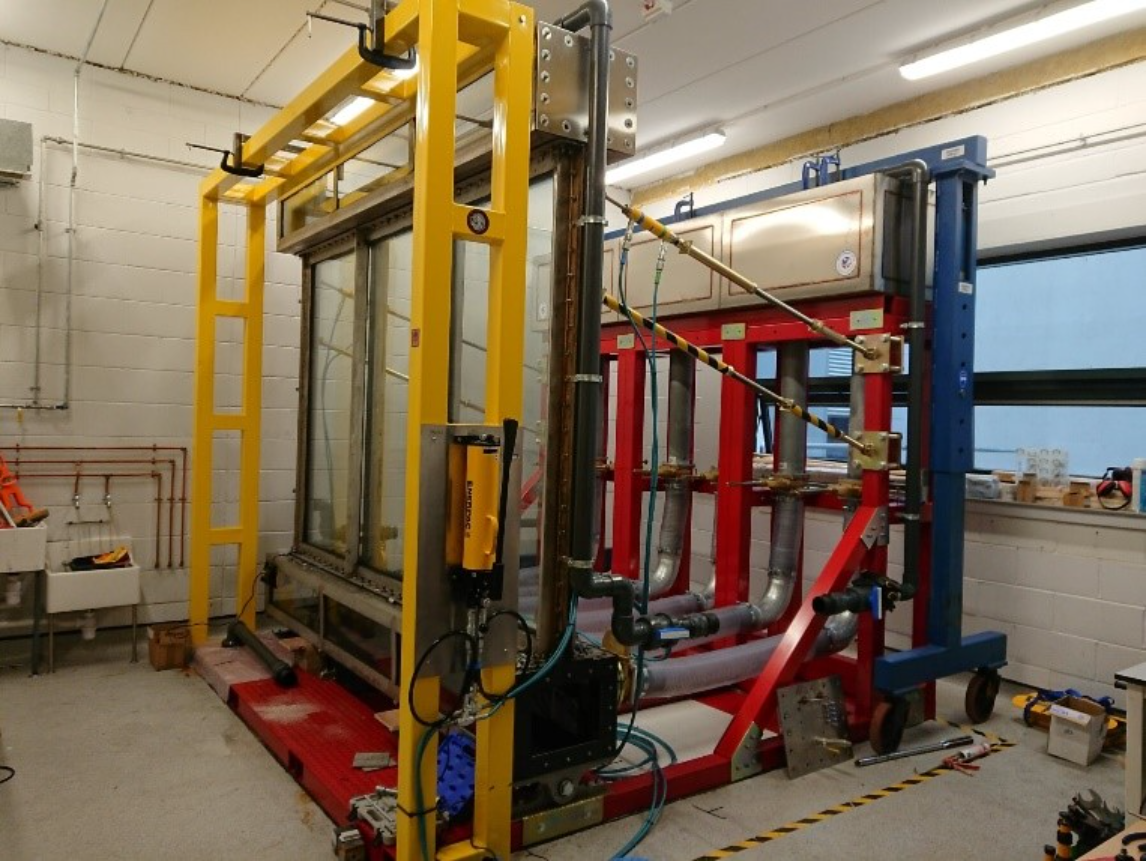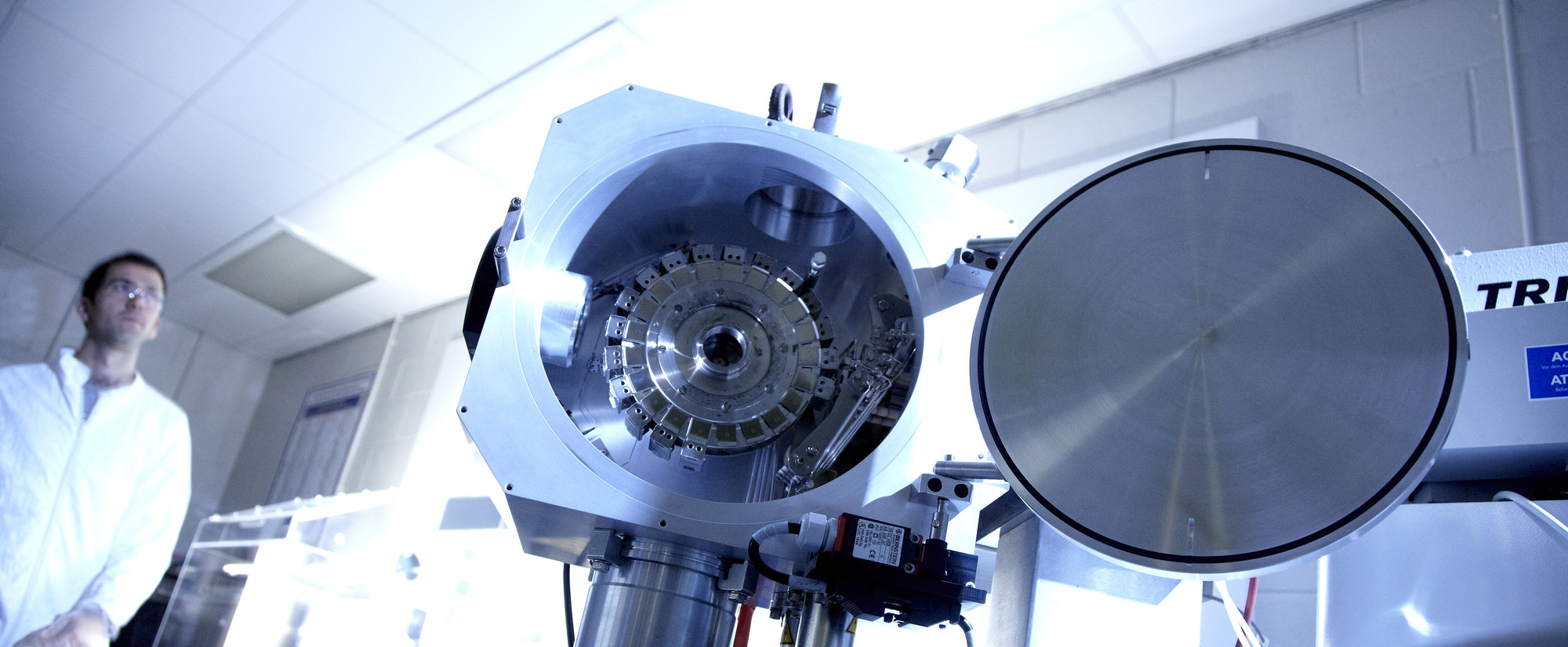Volcanological Fluid Dynamics Laboratory
Volcanic eruptions are driven by the flow of magma through the subvolcanic plumbing system, and produce lavas that flow across the Earth’s surface. Magma and lava are complex multiphase materials that undergo bubble formation and growth, crystallization, and solidification during transport.
Large Analogue Volcano Apparatus (LAVA)
LAVA is a semi-permanent installation for the investigation of multiphase fluid dynamic processes in volcanic dykes (Capponi and Llewellin 2019, Capponi et al 2020). The kit houses a 3 m wide x 2 m tall fluid-filled slot into which gas can be injected via 18 bubble injection ports at the base of the slot. High-speed videography is used to capture the multiphase flow processes.
Other equipment and capabilities
Flexible space to host bespoke apparatus to investigate volcanological fluid dynamic phenomena. Previous examples include:
- Small scale dyke kit that uses hot wax to simulate thermo-rheological localization of magma
- Kit to simulate lava fountains using water, diluted sugar syrups, and injected gas
- Experiments to study ascent and dissolution of CO2 bubbles in various analogue fluids
- Ascent of bubbles and slugs in pipe geometry using a range of Newtonian and non-Newtonian analogue fluids (Llewellin et al 2012, Lo et al 2023)
- Exchange flow in dykes using bespoke tilting dyke kit (Jones and Llewellin, 2022)
Equipment includes:
- High speed camera (Emergent Vision Technologies HR-2000) 338 fps frame grabber at 2048 x 1088 pixel resolution.
- FLIR E96 thermal camera 640 x 480 resolution, with range of lenses
- 2 x Nikon D7200 DSLR cameras
- 4 x modded GoPro 5 with c-mount lenses
- Wide range of pumps and circulators
- Extensive stock of pipes and fittings for liquids and compressed air
- Wide range of heaters and coolers, thermocouples, etc.
References:
- Capponi, A. and Llewellin, E.W., 2019. Experimental observations of bubbling regimes at in-line multi-orifice bubblers. International Journal of Multiphase Flow, 114, pp.66-81.
- Capponi, A., Crosby, A.C., Lishman, S. and Llewellin, E.W., 2020. A novel experimental apparatus for investigating bubbly flows in a slot geometry. Review of Scientific Instruments, 91(4).
- Jones, T.J. and Llewellin, E.W., 2021. Convective tipping point initiates localization of basaltic fissure eruptions. Earth and Planetary Science Letters, 553, p.116637.
- Llewellin, E.W., Del Bello, E., Taddeucci, J., Scarlato, P. and Lane, S.J., 2012. The thickness of the falling film of liquid around a Taylor bubble. Proceedings of the Royal Society A: Mathematical, Physical and Engineering Sciences, 468(2140), pp.1041-1064.
- Lo, M., Loisel, A., Burton, M. and Llewellin, E.W., 2023. Evaluating bubble chain phenomena as a mechanism for open system degassing in basaltic systems. Journal of Volcanology and Geothermal Research, 441, p.107874.
Facilities and Equipment
Research equipment facilities located in the department


/prod01/prodbucket01/media/durham-university/departments-/earth-sciences/60228-1998X749.jpg)

